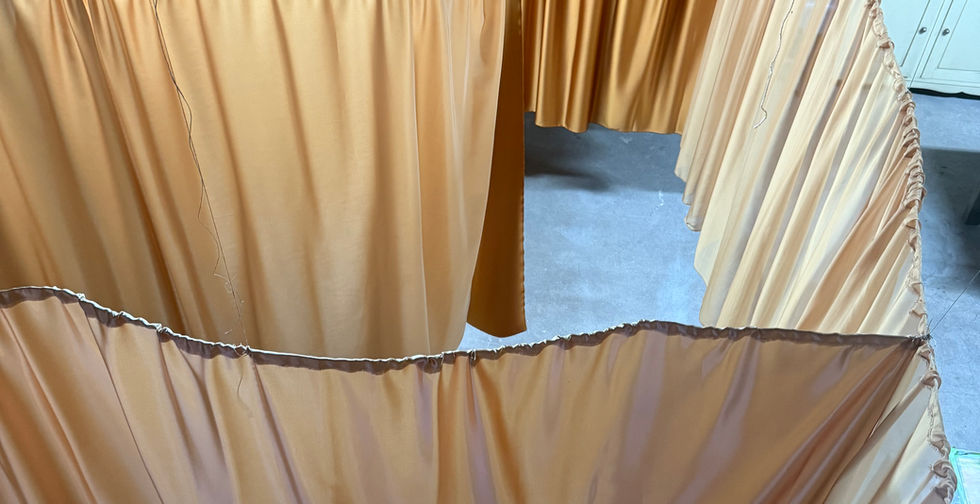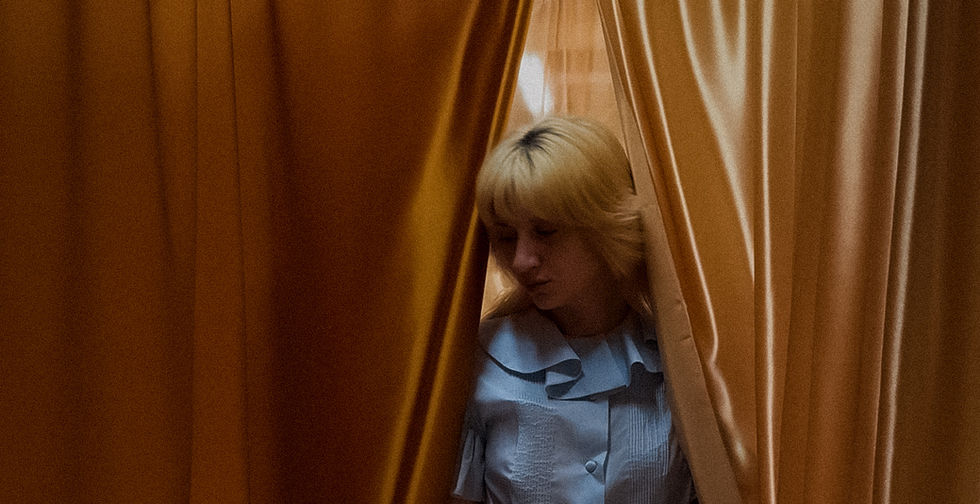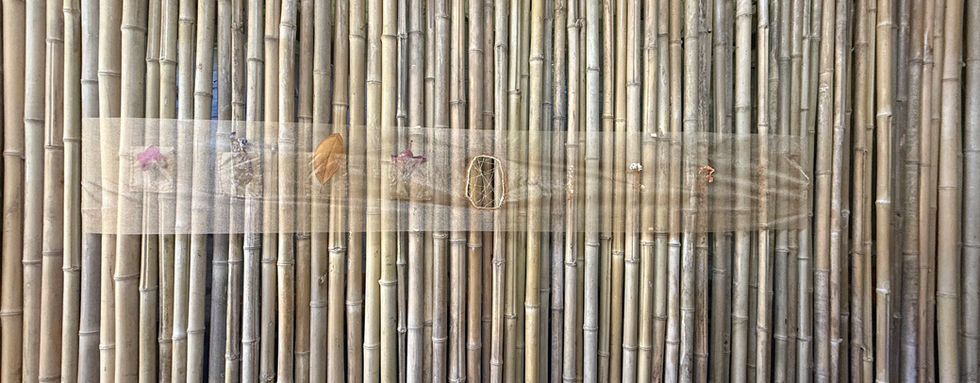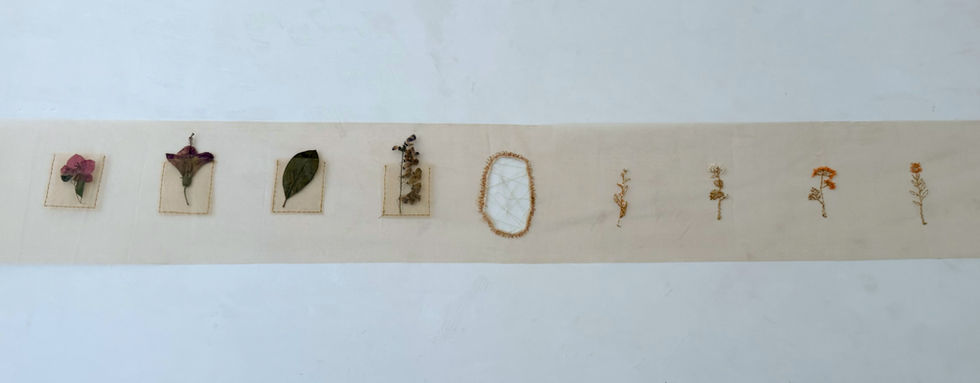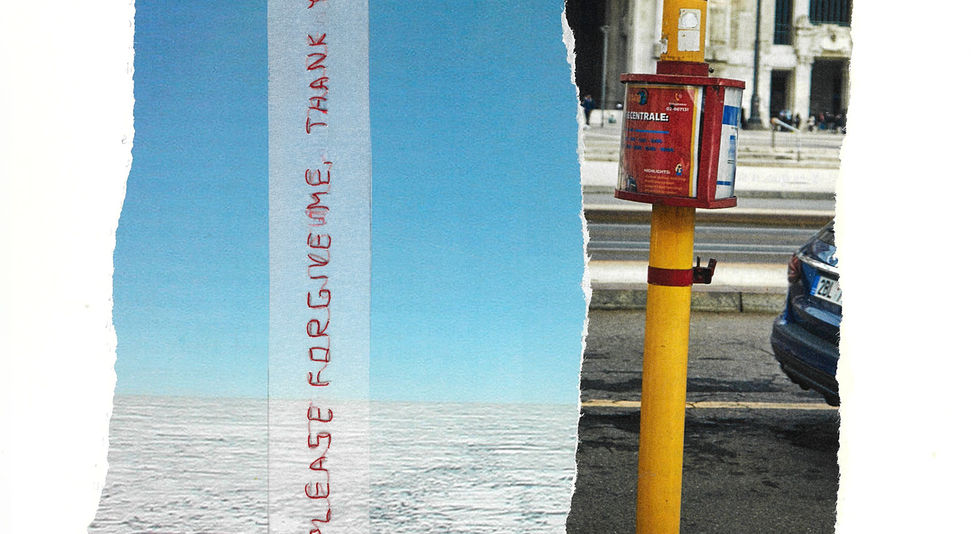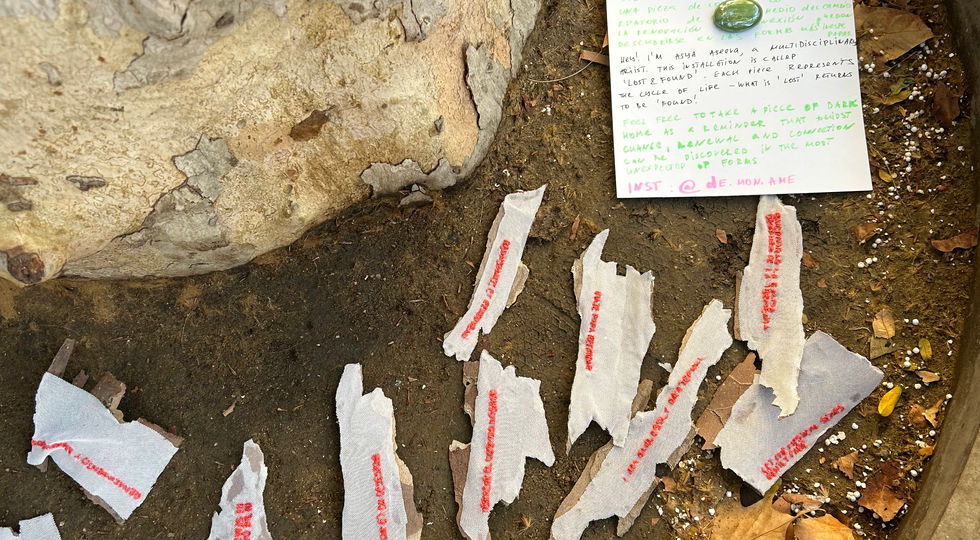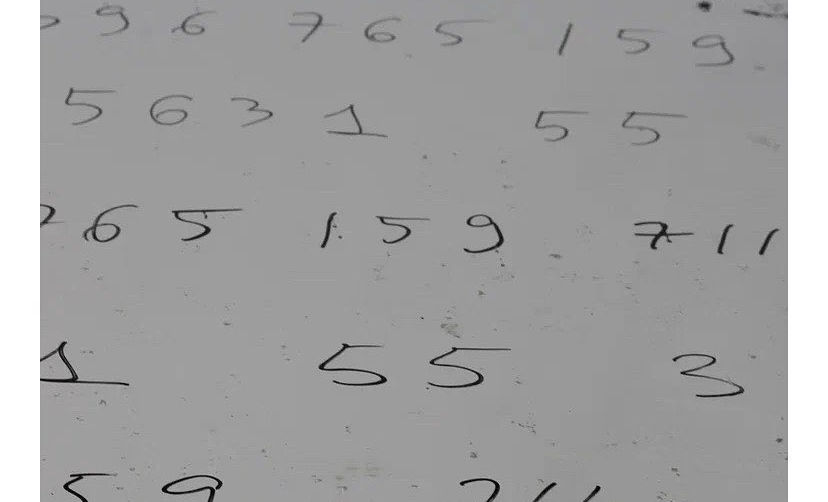The minute of now
The present is not a well-marked moment between past and future. It is a fragile frontier, constantly slipping away the moment we try to grasp it.
— Gaston Bachelard
This textile-based spatial installation invites visitors to traverse a soft labyrinth — not as a puzzle to be solved, but as a spatial metaphor for the human condition of temporal dislocation. Liminality is not a transitional phase to be overcome, but a continuous state we inhabit — the space between identities, between gestures, between then and not-yet. Echoing Victor Turner’s writings on liminality and Merleau-Ponty’s view of the body as both subject and surface, I maps this fragile in-betweenness through environments that are felt as much as they are seen.
The labyrinth in The Minute of Now is not linear. It is soft, slow, and intentionally disorienting. Its folds and veils evoke the texture of thought, of hesitation, of a consciousness that does not quite know where it is headed. In this way, the labyrinth becomes a cartography of modern anxiety — a visual and tactile rendering of how we move through life constantly trying to escape the discomfort of the present. We distract ourselves with futures, romanticize pasts, or flee into performance and productivity, never quite arriving where we are.
2025
Participatory installation, performative instruction
Approximate size: 3m x 5m
At the center of the labyrinth is not an answer, but a pause. Here, the viewer becomes the work. They are invited to sit and to remain — still for one minute. In this minor ritual, presence becomes performative. Time becomes visible. The gesture — minimal and intimate — offers no spectacle, only a confrontation with what remains when movement stops. This act of “being-with-time” echoes my larger artistic practice, which often lingers at the seams of transformation — in stitched silhouettes, layered collages, and installations that trace the invisible structures of memory and change. In The Minute of Now, the material logic of her work becomes spatial and participatory. Fabric, as always in my work, holds both symbolic and sensual charge: soft yet structuring, permeable yet containing, it defines the path while allowing light and air to pass through.
Ultimately, this installation does not guide the viewer toward revelation but gently redirects them back to themselves. It asks a difficult question: Can you bear to be exactly where you are? In a world addicted to acceleration, The Minute of Now offers a fleeting refuge — and perhaps, a quiet kind of courage.
In between
A line is stitched across it like a horizon: the left side is anchored by real dried flowers, faded and brittle, echoes of memory. On the right, embroidered blossoms bloom in thread, fragile symbols of imagined futures. But at the center, where your eye is drawn — there is nothing. A space left deliberately empty. This is where the present should be. But it is not.
We are always in motion — linguistically, mentally, emotionally. In most Indo-European languages, time is rendered spatially: the future lies "ahead," the past "behind." As cognitive scientists George Lakoff and Mark Johnson have shown, we live by metaphors — and our primary metaphors of time are rooted in direction, distance, and linearity. We march toward goals, leave things behind, look back, move forward. But where, then, is here?
Cognitive scientist Lera Boroditsky expands this idea across cultures, revealing that not all peoples conceptualize time in the same way. Some Aboriginal languages in Australia, for example, don’t use “left” or “right” but cardinal directions — and for them, time may move from east to west, not front to back. These linguistic frameworks shape perception — and trap us, too. For many of us, the present becomes an impossible location: invisible, unnameable, and uninhabited.
2025
Textile installation: organza, threads, dried flowers
Approximate size: 50 cm x 3m
The central empty space in this work becomes a metaphor for this philosophical paradox. The “now” is always slipping away — not because it’s truly absent, but because we are never there to meet it. As Merleau-Ponty and other phenomenologists describe, lived experience is never pure presence; it is layered with memory and anticipation, shaped by a body moving through a world it does not entirely possess.
This piece also draws from the concept of liminality, introduced by anthropologist Victor Turner — the in-between phase of rites of passage, where identity dissolves before being reformed. We live much of our lives in such liminal states: not quite who we were, not yet who we will become. But modern life has no rituals to hold us in this space. We resist the in-between. We race through it. We treat the now not as sacred but as a corridor — a passage to something more defined.
Corpora liminalia

2025
Mixed media
vintage print, embroidery on organza
Approximate size 35 cm x 28 cm
Corpora Liminalia is thus an invitation:
to see change not as rupture, but as renewal;
to celebrate the spaces where certainty collapses and freedom is born;
to imagine bodies — and worlds — that are still in the making.
Corpora Liminalia presents a collection of delicate embroidered silhouettes — bodies emptied of their former identities, translucent skins left behind after acts of inner transformation. These figures do not depict the body as it is, but rather the body as it is imagined — constantly moving, abandoning, recreating itself.
In moments of transition, when the known self no longer fits the world it inhabits, imagination becomes an act of survival. It is through imagining new forms of being that one can leave behind obsolete structures and step into futures not yet defined. Here, the act of shedding is not an ending, but a generative gesture: a practice of freedom. Each figure marks the moment when inner necessity demanded the invention of a new mode of existence — a new relationship with oneself, others, and the world. The artist collects these shed skins like relics of personal revolutions — silent witnesses to the infinite capacity for becoming otherwise.
In dialogue with philosophical ideas from Jacques Lacan, Julia Kristeva, and Michel Foucault, Corpora Liminalia suggests that identity is not a fixed state, but a continuous negotiation of absences, ruptures, and emergences. It is an imaginative exercise carried out in the intimate territory of the self. The embroidered silhouettes, classified in a fictional taxonomy, propose an archive of transformation: a visual mythology of metamorphosis beyond constraint, beyond expectation. They remind us that imagination is not mere fantasy, but an essential political and existential act — a reclaiming of the right to dream ourselves anew.
(Re)Swinging the Self
.png)
2024
Mixed media: organza, metallic threads, wire
Approximate size 250 cm x 50 cm x 50 cm
This project explores the complexity and fluidity of human emotions, inspired by the metamodern idea of oscillation between extremes—joy and sorrow, light and darkness, chaos and harmony. The work explores the way emotions and identity are dismantled and reassembled—how fragments of experience dissolve, intertwine, and form new configurations. Using organza as both medium and metaphor, I deconstruct personal emotional states, tracing the impact of relocation, memory, and transformation.
The organza panels feature gradient colors, transitioning from soft, light tones to deep, dark shades. The lighter areas represent joyful and uplifting feelings, while the darker ones reflect complex and heavy emotions. Each panel are embroidered with words that capture the nuances of these states. Suspended from the ceiling, they appear to float, creating the impression of emotions in constant motion. As air flows through the installation, the panels sway, alternately bringing light or dark sections to the forefront—just as in life, joy and sorrow continuously replace one another.
As a relocated person, I exist in the liminal space between places, cultures, and versions of self. My work embodies this continual negotiation—an attempt to piece together something coherent from fragments of belonging and displacement. Organza, a material that is both delicate and resilient, serves as a perfect analogy for this process: transparent, mutable, and capable of holding intricate detail while remaining fluid and ever-changing.
This project invites the viewer into a space of transition—where deconstruction is not destruction but an act of becoming, and reconstruction is not a return to the old, but an embrace of the evolving self. It is a meditation on how we unravel, adapt, and find new ways to exist within shifting landscapes.

Time anchor

This object is crafted from a well-worn book published by ICA Moscow, the Institute of Contemporary Art from which I graduated. It has accompanied me on my journey for the past two years, becoming a relic of that time. Marked by the passage of time and imbued with my personal annotations, the book serves as a vessel of nostalgia, echoing the hopes and aspirations I held during my studies.
The physical wear of the book reflects the intimate relationship between memory and materiality, evoking Gaston Bachelard’s “poetics of space,” where our environments shape our experiences and memories. Reassembled with wire that forms the image of an anchor, the object symbolizes the deep connection I maintain with my past. This anchor not only grounds me in my history but also invites reflection on the fluidity of identity and the enduring impact of sensory experience.
Our memories are intricately woven into the fabric of our existence, shaping how we perceive the world around us. Through this artwork, I explore the interplay of personal impressions, cultural contexts, and sensory memories, and how they intertwine to help us navigate our identities amid the currents of time.
2024
Sheets from the book “Selected Lectures on Modern Art and Philosophy”,
published by ICA Moscow, metal wire
40 x 20 x 60 cm (dimensions without hanger)
IMS PFM TY ILY

2024
Mixed media.
paper, magazine clippings, threads, metal wire
Dimensions vary
IMS. PFM. TY. ILY - the series of collages and the installation, showing the harmful effects of human activity—garbage, exhaust fumes, and landfills.
Around the edges, a Hawaiian prayer is embroidered, saying: "I'm sorry, please forgive me, thank you, I love you." This prayer, rooted in the Ho'oponopono tradition, highlights the tension between human destructiveness and the potential for repentance and renewal and embodies a spiritual cleansing and reconciliation process.
Embroidery, as a traditional form of women's craft, symbolizes the nurturing and caretaking roles women often embrace in society. This art form, characterized by patience and attention to detail, mirrors the persistent and compassionate efforts women contribute to environmental advocacy and leadership. In doing so, I emphasize how women play a crucial role in healing and restoring the environment, using their voices and actions to promote sustainable practices and inspire change within their communities and beyond. I honor the unique contributions of women in the ongoing fight for a healthier planet.
The flowers that crown the installation symbolize hope and rebirth, suggesting that through sincere effort and a genuine change in consciousness, humanity can foster a symbiotic relationship with nature once more.
I see the work as a meditation on the interconnectedness of all life and the moral imperative to act as stewards of the environment. It echoes themes of existential responsibility and the possibility of redemption, suggesting that despite the damage inflicted, there remains an enduring hope that humanity can mend its ways and the earth, in turn, can heal and forgive. This installation serves as both a solemn reflection on our current plight and an inspiring call to action, encouraging a shift from a path of destruction to one of harmony and reverence for the natural world.
Lost & found
"Lost & Found" is an art installation that transforms the ephemeral into a profound philosophical reflection. Crafted from fallen tree bark, the work symbolizes the delicate fragility of nature, its transient beauty captured in the organic material. Upon these natural fragments, fabric and embroidered messages in three languages express a universal sense of unity, transcending cultural and linguistic boundaries.
This fusion of organic and human-made materials highlights the cyclical nature of existence: what is ‘lost’ in one form is ‘found’ in another. The act of returning these bark fragments to their source, the trees, serves as a poignant acknowledgment of our interconnectedness with the world around us. The work invites viewers to contemplate their role within this intricate web of life and nature’s resilience.
"Lost & Found" prompts introspection on the interplay between humanity and the natural world, reminding us that in the midst of loss and change, there is always the potential for renewal. Through this delicate balance of fragility and strength, the installation offers a quiet but powerful reflection on how connection and transformation can be discovered in the most unexpected places.
2023
Mixed media.
tree bark, canvas, threads
Dimensions vary
5631 55 396765159 711
Numbers - a numerological reading of the phrase Josephine Peladan, a magician, literary scholar, proto-curator of the late nineteenth and early twentieth century, who argued a lot about the decline of civilization, the catastrophic consequences of the first world war and political pressures.
Nous ne croyons ni au progress ni au salut - we believe neither in progress nor in salvation.
Lilies are placed on the surface, a peculiar reference to Oscar Wilde's portrayal of Peladan. The lily, on the one hand symbolizes purity and innocence, the early Christians believed that the lily sprouted from the tears of Eve, who leaving paradise. The second meaning of the lily is death. At the end of the of the installation, the lilies wilted.
2022
Mixed media: flowers, paper
Approximate size 120 x 200 cm
Photos by Nailia Muhametzyanova
@nailia_mova_art
Renewal
Through wound, light enter us.
Every woman’s soul is covered with scars - scars of burning grief, of bitter sadness, of a hearts burneв to ashes. A scar means that the pain is gone and the wounds have healed. It means we have conquered the pain, learned our lesson and the scar is a tattoo of triumph. And it is time to leave behind the weakness an the expectation of praise, the cruelty to ourselves and the rigor of unloving, the desperate longing and the regrets of unfulfilled dreams. It is time to claim the right to the healing fire of anger, the light of our depth and the tenderness of our vulnerability.
2023, The series of 6 works. Mixed media: paper, magazine clippings, threads.






Threads of Connection
Within nature's tapestry, we are but a thread, intertwined with her wonders.
Existence connects, humankind and nature,
a dance of cosmic threads, ephemeral and eternal, revealing the infinite web.
With humble hearts, let us learn from her ways, for in nature's wisdom, lies the light of our days.
In the art work "Threads of Connection" I reflect upon our role as stewards of the Earth and recognize the profound impact of our choices on the environment. I invite contemplation on the interconnectedness of all living beings and the significance of fostering a harmonious relationship with the Earth.
Embedded within the collages are visual representations of human figures, symbolizing our presence and impact on the Earth. The figures of nature and human faces are interconnected by the threads, symbolizing the intricate web of relationships between humankind and the environment reflecting the delicate equilibrium necessary for a sustainable coexistence between humanity and the natural world. This imagery serves as a reminder of our responsibility to protect and nurture the Earth, emphasizing the interconnectedness of all living beings.
2023, The series of 6 works. Mixed media: paper, magazine clippings, threads.



Whispers of Unity. Collages of Enchanted Spells
Where magic weaves its subtle spell,
Whispers of truth, beyond the mundane,
Guide us on paths untamed and arcane.
Whispers of Unity invites contemplation - a reflection on the dance of opposing forces in our lives, on our individual and collective journey in a world of contrasts. Through the fusion of materials, this series testifies to the human spirit's relentless quest to harmonize opposing forces, to become stronger, more united and in touch with the limitless reservoirs of our depth that are within and around us.
The captivating mysticism of Wiccan incantations is at the heart of this collection and flows through the compositions, guiding the incantations embedded within. Each phrase carries an intention, a prayer request to the universe for support and creative inspiration, forming a tapestry of interconnectedness.
The act of asking for help from the universe, in parallel with the creation of spells, becomes a visual metaphor for our constant quest for wholeness and unity.
2023, The series of 3 works. Mixed media: paper, magazine clippings, leaves and flowers, threads.



Swirl the dust
A reflection on the beautiful paradox of being both eternally small stardust and a vessel of strong, complex emotions.
The art work encourages reflection on our place in the universe and the complex shades of emotion from which the very fabric of our humanity is woven. It is a violent swirl, an emotional whirlpool, a dance of deep depth and intensity that leads us through a kaleidoscope of life.
The Eden project

In the Middle Ages, the collective fantasy of paradise was a compensation for the brutal and sometimes simply inhumane conditions in which people had to constantly engage in hard work just to survive.
For all the prosperity and even abundance, being able to travel the world, get all kinds of information, buy all kinds of things and food at the store instead of constantly struggling to survive, why are we still unhappy? Could it be that the very idea of happiness is an illusion?
The deep chasm between material prosperity and the longing of the yearning human soul has been filled by the idea of romantic love, the fantasy of finding a man who would give meaning to our lives would satisfy our deepest needs. Dreams of Eden are a metaphor whose meaning, the archetypal human desire to return "home" and reconnect with the Other. The search for the possibility of returning to the lost paradise of childhood, to the bosom of original mystical belonging with those who since birth have surrounded us with care and attention.




